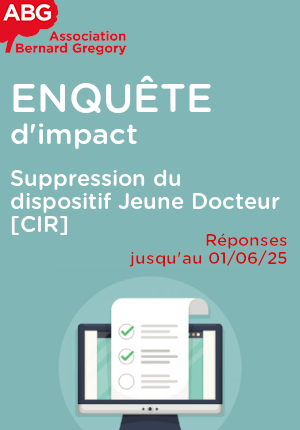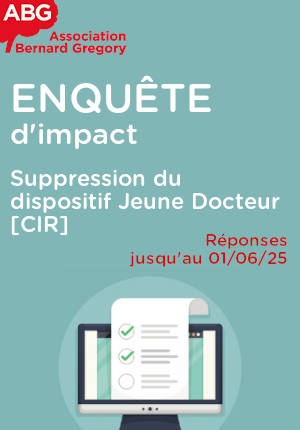Applications des méthodes de factorisation de grandes matrices à l'éclairage global. // Application to Global Illumination of Monte-Carlo Factorization Methods of Large Matrices
|
ABG-132154
ADUM-66216 |
Sujet de Thèse | |
| 23/05/2025 |
Université Grenoble Alpes
Grenoble Cedex 9 - Auvergne-Rhône-Alpes - France
Applications des méthodes de factorisation de grandes matrices à l'éclairage global. // Application to Global Illumination of Monte-Carlo Factorization Methods of Large Matrices
- Informatique
Simulation de l'eclairage, Methodes de Monte-Carlo, Theorie des operateurs, Factorisation de grandes matrices
Lighting simulation, Monte-Carlo methods, Operator theory, Large matrix factorization
Lighting simulation, Monte-Carlo methods, Operator theory, Large matrix factorization
Description du sujet
La simulation d'éclairage photoréaliste nécessite la résolution de l'équilibre de l'énergie lumineuse dans une «scène», représentée par des primitives géométriques (polygones) et des propriétés matérielles (par exemple, des fonctions de réflectance). L'équilibre de l'énergie lumineuse dans la géométrie est la solution L d'une équation linéaire L = E + T L, où T est l'opérateur de transport de lumière de dimension infinie qui envoie la lumière vers les surfaces visibles suivantes et la réfléchit dans une nouvelle distribution lumineuse, et E est la lumière émise.
Nous avons récemment montré que, bien que T ne soit généralement pas un opérateur compact, une approximation fortement convergente de T par des opérateurs compacts peut néanmoins conduire à la construction d'approximations utiles de T en basse dimension. De ce fait, T se comporte largement comme une «matrice de dimension infinie», sauf dans des régions très localisées de l'espace des distributions lumineuses.
Dans cette thèse, nous nous interessons à l'exploration des avantages potentiels des méthodes récemment développées par Halko et Dimov [1,2,3] pour factoriser l'opérateur de transport de lumière, et à l'expression de ces méthodes en termes d'opérations de lancer de rayon. Parmi les exemples, on peut citer: le calcul d'approximations adaptatives de T en basse dimension, le calcul des fonctions propres de l'opérateur dans les scènes Lambertiennes et non Lambertiennes, le calcul des fonctions conjuguées pour T pouvant conduire à une nouvelle méthode de résolution de l'illumination globale par calcul direct de l'opérateur résolvent de T, et plus généralement l'application de la théorie des opérateurs au rendu différentiel.
------------------------------------------------------------------------------------------------------------------------------------------------------------------------
------------------------------------------------------------------------------------------------------------------------------------------------------------------------
Photorealistic lighting simulation requires solving the equilibrium of light energy in a ``scene'', represented by geometric primitives (polygons) and material properties (e.g. reflectance functions). The equilibrium of light energy in the geometry is the solution L to a linear equation L = E + T L,
where T is the infinite-dimensional light transport operator that sends light to the next visible surfaces and reflects it into a new light distribution, and E is the emitted light.
We have recently shown that whereas T is generally not a compact operator, a strong-converging approximation of T by compact operators can still leads to build useful low-dimensional approximations of T. As such, T largely behaves like an ``infinite dimensional matrix'' except in very localized regions of the
space of light distributions.
In this PhD we are interested in exploring the potential advantages of the recently developed methods of Halko and Dimov [1,2,3] to factor the light transport operator, and express these methods in terms of path tracing operations. Examples include: the calculation of adaptive low-dimensional approximations of T, the calculation of eigenfunctions of the operator in Lambertian and non-Lambertian scenes, the calculation of conjugate functions for T possibly leading to a new method for solving global illumination by direct calculation
of the resolvent operator of T, and more generally the application of operator theory to differential rendering.
------------------------------------------------------------------------------------------------------------------------------------------------------------------------
------------------------------------------------------------------------------------------------------------------------------------------------------------------------
Début de la thèse : 01/10/2025
Nous avons récemment montré que, bien que T ne soit généralement pas un opérateur compact, une approximation fortement convergente de T par des opérateurs compacts peut néanmoins conduire à la construction d'approximations utiles de T en basse dimension. De ce fait, T se comporte largement comme une «matrice de dimension infinie», sauf dans des régions très localisées de l'espace des distributions lumineuses.
Dans cette thèse, nous nous interessons à l'exploration des avantages potentiels des méthodes récemment développées par Halko et Dimov [1,2,3] pour factoriser l'opérateur de transport de lumière, et à l'expression de ces méthodes en termes d'opérations de lancer de rayon. Parmi les exemples, on peut citer: le calcul d'approximations adaptatives de T en basse dimension, le calcul des fonctions propres de l'opérateur dans les scènes Lambertiennes et non Lambertiennes, le calcul des fonctions conjuguées pour T pouvant conduire à une nouvelle méthode de résolution de l'illumination globale par calcul direct de l'opérateur résolvent de T, et plus généralement l'application de la théorie des opérateurs au rendu différentiel.
------------------------------------------------------------------------------------------------------------------------------------------------------------------------
------------------------------------------------------------------------------------------------------------------------------------------------------------------------
Photorealistic lighting simulation requires solving the equilibrium of light energy in a ``scene'', represented by geometric primitives (polygons) and material properties (e.g. reflectance functions). The equilibrium of light energy in the geometry is the solution L to a linear equation L = E + T L,
where T is the infinite-dimensional light transport operator that sends light to the next visible surfaces and reflects it into a new light distribution, and E is the emitted light.
We have recently shown that whereas T is generally not a compact operator, a strong-converging approximation of T by compact operators can still leads to build useful low-dimensional approximations of T. As such, T largely behaves like an ``infinite dimensional matrix'' except in very localized regions of the
space of light distributions.
In this PhD we are interested in exploring the potential advantages of the recently developed methods of Halko and Dimov [1,2,3] to factor the light transport operator, and express these methods in terms of path tracing operations. Examples include: the calculation of adaptive low-dimensional approximations of T, the calculation of eigenfunctions of the operator in Lambertian and non-Lambertian scenes, the calculation of conjugate functions for T possibly leading to a new method for solving global illumination by direct calculation
of the resolvent operator of T, and more generally the application of operator theory to differential rendering.
------------------------------------------------------------------------------------------------------------------------------------------------------------------------
------------------------------------------------------------------------------------------------------------------------------------------------------------------------
Début de la thèse : 01/10/2025
Nature du financement
Précisions sur le financement
Concours allocations
Présentation établissement et labo d'accueil
Université Grenoble Alpes
Etablissement délivrant le doctorat
Université Grenoble Alpes
Ecole doctorale
217 MSTII - Mathématiques, Sciences et technologies de l'information, Informatique
Profil du candidat
Les candidats doivent obligatoirement avoir un solide bagage en mathematiques, et idéalement de l'expérience en informatique graphique (example: avoir implémenté son propre ray-tracer), et maîtriser le C++.
Applicants are required to have a strong mathematical background, and ideally some experience in rendering and master C++. Having written a ray tracer is for instance a plus.
Applicants are required to have a strong mathematical background, and ideally some experience in rendering and master C++. Having written a ray tracer is for instance a plus.
09/06/2025
Postuler
Fermer
Vous avez déjà un compte ?
Nouvel utilisateur ?
Besoin d'informations sur l'ABG ?
Vous souhaitez recevoir nos infolettres ?
Découvrez nos adhérents
 Généthon
Généthon  Nokia Bell Labs France
Nokia Bell Labs France  ASNR - Autorité de sûreté nucléaire et de radioprotection - Siège
ASNR - Autorité de sûreté nucléaire et de radioprotection - Siège  ONERA - The French Aerospace Lab
ONERA - The French Aerospace Lab  ADEME
ADEME  Groupe AFNOR - Association française de normalisation
Groupe AFNOR - Association française de normalisation  SUEZ
SUEZ  Ifremer
Ifremer  TotalEnergies
TotalEnergies  MabDesign
MabDesign  CESI
CESI  Aérocentre, Pôle d'excellence régional
Aérocentre, Pôle d'excellence régional  Laboratoire National de Métrologie et d'Essais - LNE
Laboratoire National de Métrologie et d'Essais - LNE  CASDEN
CASDEN  Tecknowmetrix
Tecknowmetrix  PhDOOC
PhDOOC  MabDesign
MabDesign  ANRT
ANRT  Institut Sup'biotech de Paris
Institut Sup'biotech de Paris







